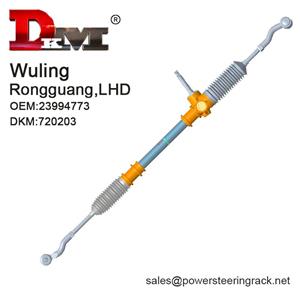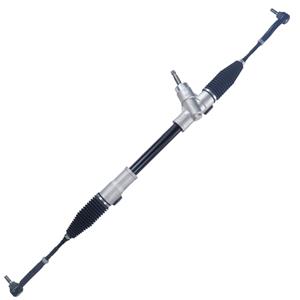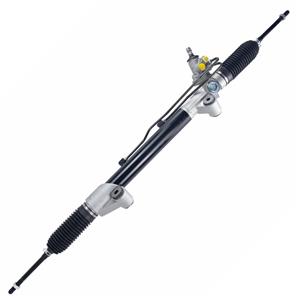What is the steering torque through the rack and pinion gear?
In the automotive steering system, the "rack and pinion gear" structure is currently the most common mechanical steering mechanism. The function of this device is to convert the force applied by the driver on the steering wheel into a linear motion that drives the front wheel to deflect, thereby completing the steering. In this process, torque, as the core physical quantity, plays a key role in power conversion, torque amplification, and control feedback.
So what is the steering torque through the rack and pinion gear? How is it generated and transmitted? This article will analyze in depth from multiple angles such as mechanical principles, structural configuration, and design parameters to fully answer this question.
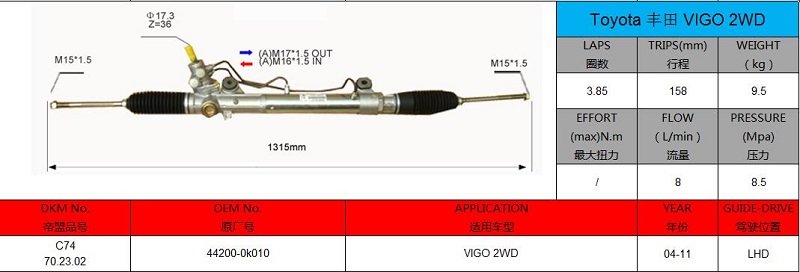
What is a rack and pinion gear?
The rack and pinion gear is a mechanical device that converts rotational motion into linear motion. It consists of two main components: a cylindrical "gear" (commonly called a pinion) and a linear "rack". The pinion is connected to the steering shaft, and the rack is connected to the steering tie rod. When the driver turns the steering wheel, the force is transmitted to the pinion through the steering column, and the pinion drives the rack to move left and right, thereby driving the wheel to deflect.
This structure has the following typical characteristics:
·Fast mechanical response: The rotation of the pinion is immediately converted into the movement of the rack.
·Compact structure: Compared with traditional worm gear or recirculating ball system, the rack and pinion gear system is lighter and smaller.
·Natural feedback: Road information can be directly fed back to the steering wheel through the rack and pinion gear structure.
It is in this process that the generation and transmission of torque play a decisive role.
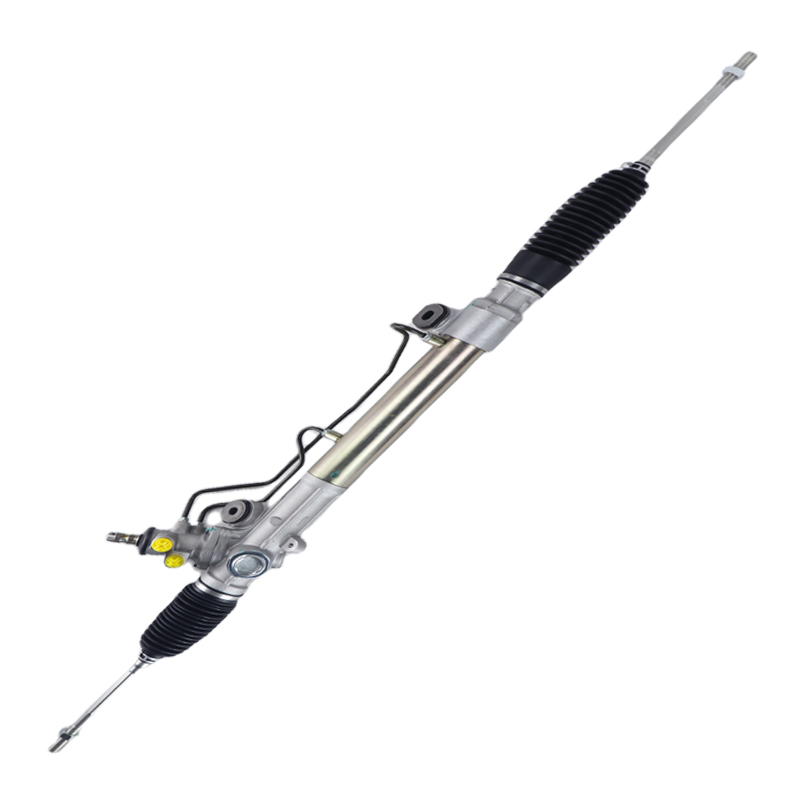
What is steering torque?
In the rack and pinion gear system, the so-called "steering torque" generally refers to the driving torque generated by the torque applied by the driver on the steering wheel after it is transmitted to the rack through the pinion. This torque is not a fixed value, but a dynamic parameter, which depends on the following factors:
1. Pinion radius (r): in meters. The larger the pinion, the greater the linear thrust generated by the same angular force.
2. Force applied by the driver (F): in Newtons.
3. Torque (T) = F × r: that is, force multiplied by the radius of action of the pinion.
For example, if the driver applies a force of 20 Newtons to the steering wheel and the effective radius of the pinion is 0.02 meters, the torque generated is:
T = 20 × 0.02 = 0.4 Newton meters
This torque then drives the rack to move through the rotation of the pinion and applies steering force to the wheel.
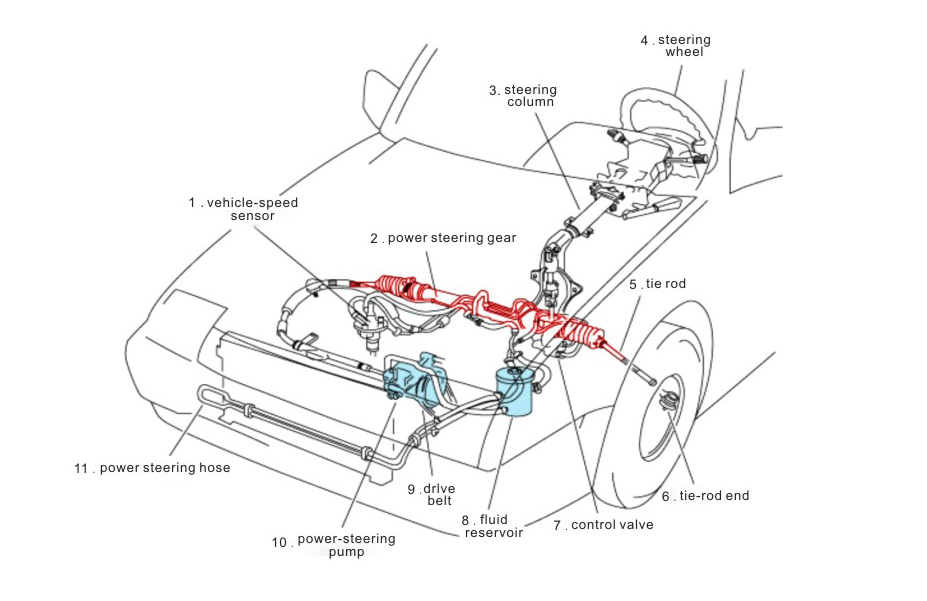
What factors affect the steering torque of rack and pinion gear?
1. Pinion diameter and number of teeth
The size of the pinion directly determines its torque conversion capacity. The larger the pinion radius, the more linear displacement it provides per unit angle, but the greater the torque required; conversely, the sensitivity is higher but the torque is smaller.
At the same time, the number of teeth on the pinion also affects the transmission ratio. A large transmission ratio means that the steering wheel needs to turn more circles in exchange for a larger rack displacement, but the driving force required is less. A small transmission ratio is sensitive but laborious.
2. Rack load
When stationary or at low speed, the friction between the tire and the ground is large, and the steering resistance is significant. At this time, the rack bears a greater load and requires a higher torque.
At high speeds, the torque required for steering is reduced due to the increased self-stability of the wheels. Therefore, the torque requirements of the rack and pinion gear system under different working conditions vary greatly.
3. Power-assistance type (hydraulic/electric/non-power-assistance)
Modern cars are often equipped with power-assistance systems - hydraulic power steering (HPS) or electric power steering (EPS) - to reduce the original force applied by the driver, thereby reducing the required torque.
But no matter what form of power-assistance is used, the final steering force is still transmitted through the rack and pinion gear. Therefore, the rack and pinion gear must be able to withstand the entire steering load.
4. Tooth surface contact area and lubrication status
During the gear meshing process, the friction, meshing accuracy and lubrication status of the tooth surface will affect the actual torque transmission efficiency. The smaller the friction, the higher the efficiency; conversely, a larger input torque is required to overcome the internal resistance.
What is the torque range of rack and pinion gear in common vehicles?
Due to different structures and uses, different types of vehicles have different steering torque ranges that their rack and pinion gear systems need to withstand. The following is a general classification description:
| Vehicle type | Rack and pinion gear input torque (unassisted) | Rack and pinion gear output force (N) |
| Small passenger car | 0.3 – 1.0 Nm | 500 – 1200 N |
| Mid-size SUV | 0.8 – 2.0 Nm | 1000 – 1800 N |
| Large truck/pickup | 1.5 – 3.0 Nm | 1500 – 3000 N |
Explanation: The input torque in this table refers to the pinion torque applied by the driver through the steering wheel; the output force refers to the push and pull force applied by the rack to the tie rod, thereby turning the wheel.
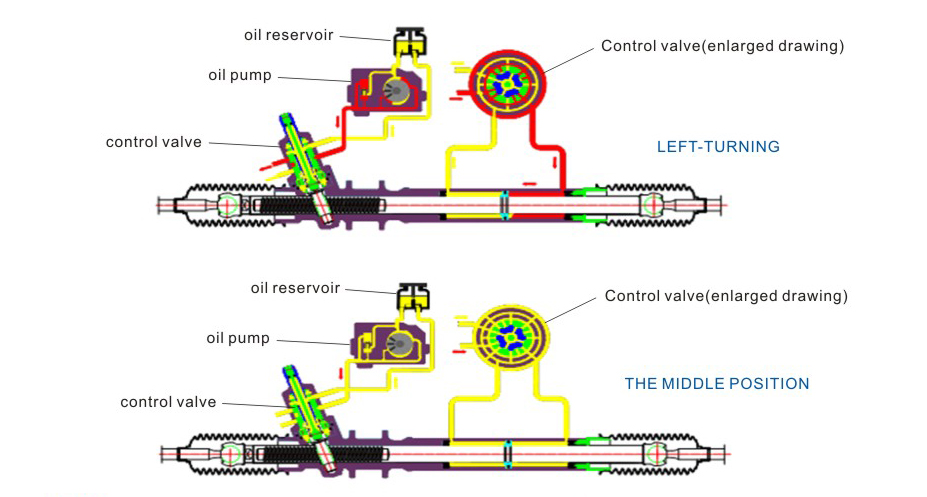
How to calculate the actual rack and pinion gear torque?
In engineering, the accurate calculation of the steering torque of the rack and pinion gear system is usually based on the following steps:
Step 1: Measure the gear radius
Assuming that the pinion diameter is 40 mm, the radius r = 0.02 m
Step 2: Measure the steering wheel force input
The torque sensor shows that the driver applies a tangential force of 20 Newtons at a certain moment.
Step 3: Calculate the torque of the pinion
T = F × r = 20 N × 0.02 m = 0.4 N·m
Step 4: Convert torque to linear thrust
Considering the circular meshing relationship between the pinion and the rack, the pinion converts the torque into a linear force, force F = T ÷ r.
That is, F = 0.4 ÷ 0.02 = 20 Newtons (return to the initial value and verify that it is correct)
Step 5: Consider the transmission efficiency (assuming it is 85%)
The actual rack output force is: 20 N × 85% ≈ 17 N
The impact of rack and pinion gear materials on torque bearing capacity
The durability of rack and pinion gear directly determines whether the system can withstand torque shocks stably for a long time. Common materials include:
1. High-strength steel alloys (such as 40Cr): used for pinions to withstand large torque shocks;
2. Quenched and tempered steel or forged steel: used for rack bodies to withstand tension and push;
3. Surface carburizing or nitriding treatment: increase wear resistance and extend meshing life;
Material selection plays a decisive role in the maximum torque bearing limit of the system. For example, a high-strength carburized steel pinion has a maximum torque of more than 5 Nm, which can meet extreme operating requirements.
Rack and pinion gear: What problems will insufficient or excessive torque cause?
1. Insufficient torque
•Slow steering and insensitive response;
•Insufficient force at low speed or parking steering;
•Increased driving fatigue.
2. Excessive torque
•The steering system is too sensitive and easy to cause loss of control;
•Increased wear of gears and racks;
•Unsmooth system engagement, abnormal noise or blocking.
Therefore, when designing the rack and pinion gear system, the torque range must be accurately calculated and adjusted to ensure that it is in a reasonable range.
High-Quality Steering Gears at Wholesale Prices
Looking for high-quality power steering gears at affordable wholesale prices? Guangdong Diamond Auto Parts Co., Ltd. (DKM) is a leading manufacturer and supplier based in China, offering steering systems for major car brands like Toyota, Honda, and Mitsubishi. Our factory in Foshan is equipped with state-of-the-art machinery, ensuring that we can deliver high-quality products at low prices.
